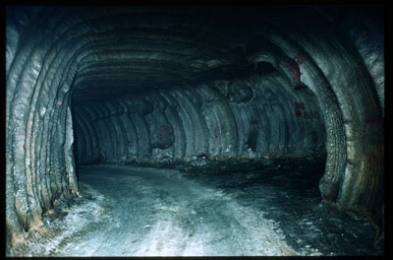In Smith's words, "The energy industry, in general, is not yet comfortable with how to quantify and capture the value generated by Compressed Air Energy Storage."
This is Greentech Media's third piece in the last few weeks on Compressed Air Energy Storage (See CAES Part 1 and CAES Part 2). Our previous CAES articles focused mostly on technology and applications.
But Black & Veatch and their customers, whether they be utilities or developers, are not fixated on technology. In fact, according to Smith, CAES is not really a technological play and uses proven off-the-shelf technology. Finding appropriate and safe places to pump the air underground is seen as one of the biggest hurdles.
What B&V and Smith are really looking to understand is the value proposition of CAES. Energy storage creates a system benefit but the question is -- who pays for that system benefit?
How does a utility or developer make money with a CAES energy facility? How does a utility or operator get a financial return?
Quick review on the motivation for energy storage:
- Renewable Portfolio Standards (RPS) and pending Greenhouse Gas (GHG) legislation favors renewables like wind and solar. But the intermittent nature of these energy sources requires "firming" by either storage or natural gas-fired generation.
- Integration of variable wind and solar resources requires assets to manage intermittency.
Quick review on the mechanics of CAES:

So, back to the question. How does a utility or operator make money with a CAES energy facility?
The value of storage can come from several angles:
- Energy price variation -- playing the spread between on-peak and off-peak prices. The differential between the two prices is the time-value of energy storage. This is basically, "Buy low, sell high." But according to Smith at B&V, this doesn't necessarily get you there. And "there" is the ability for a CAES project to generate revenue as a stand-alone project.
- There is value in capacity
- There is value in ancillary services such as spinning reserves, regulation up, regulation down, black start and VAR support
- And, of course, there is value in integrating renewable energy sources.
If utilities and operators can't make money solely on price variation - the firms will have to also sell ancillary services and capacity. If CAES can't serve as a merchant stand-alone project, then economically it might make more sense to build a combustion turbine (CT) or a combined cycle (CC) coal plant. In Smith's view -- CAES' competition is a cheap combustion turbine.
In Smith's words, "We are at the tip of the iceberg on how these projects will ramp up and come to market."
CAES plants and pilot projects (partial list):
- The first CAES plant, a 290 MW facility, started up in Huntorf, Germany in 1978
- Alabama Electric Cooperative's 110 megawatt McIntosh plant has been running for 20+ years
- ISEP, The Iowa Stored Energy Park -- "The utilities are attempting to finalize the financial and system benefit feasibility," according to Smith
- Akron Ohio's FirstEnergy, looks to use a cavern in an old limestone mine
- PG&E is exploring a 300 megawatt CAES project in Kern County, California
- PSE&G, of New Jersey, is investing about $20 million in CAES
- Proposed Alton CAES project in Nova Scotian salt mines

Aucun commentaire:
Enregistrer un commentaire